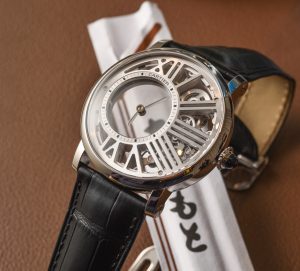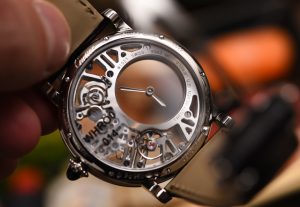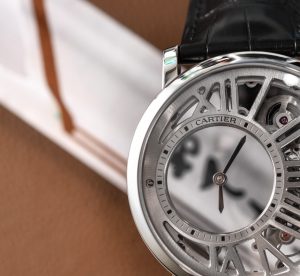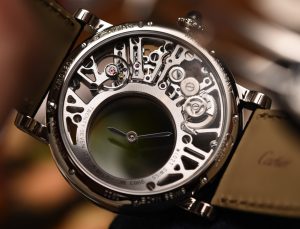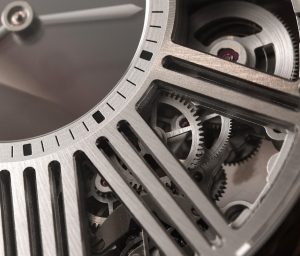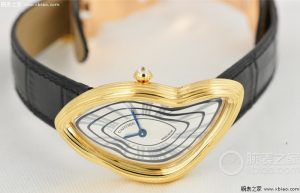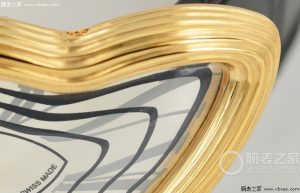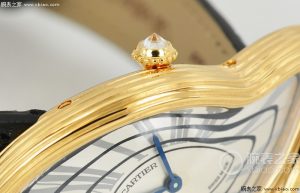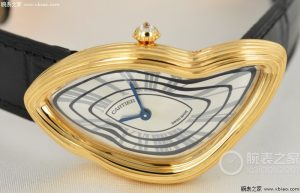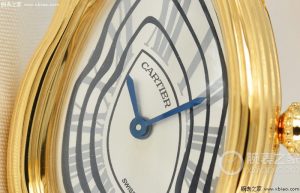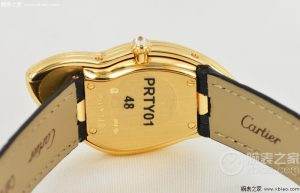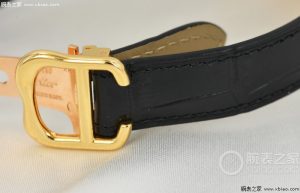Is Cartier‘s recently released dive watch, the Cartier Calibre de Replica Cartier Diver, more than just a pretty face? We sought to find out in this test feature from the WatchTime archives. Scroll down to read the full review, with original photos by Robert Atkinson.
Just about now, some of you are thinking “A Cartier dive watch? Great, I’ll wear it with my neoprene tux.” If something like that crossed your mind, read on, and be educated. The International Organization for Standards, or ISO, is well known to watch enthusiasts. Just about everyone knows the magic numbers -4 to +6. They are part of ISO 3159 governing mechanical wrist chronometers. ISO 1413 sets standards for shock-resistant watches, and ISO 764 covers antimagnetic watches. There’s also an ISO standard for dive watches: number 6425. We took an in-depth look at it in this article. Our test watch meets this ISO standard. Many so-called dive watches do not.
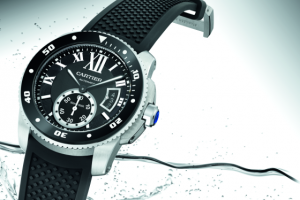
The Cartier Calibre de Cartier Diver’s Look
Dive watches are defined by their cases, so that’s where we will begin. Aesthetically, the case is clearly a member of the Calibre de Cartier family. At 10.92 mm thick in our calipers (and 11 mm officially), the Calibre Diver is slim. When designing the watch, Cartier prioritized a svelte profile. At 111 grams, it’s also light, but as we’ll see, it’s no lightweight. All its surfaces wear a fine brushed finish. A polished bevel along the outer edges of the lugs catches the light. Between the lugs, the top of the case band angles out to meet the bracelet’s end pieces. On our test watch, this angled lip covers the gap between the strap and the case. This gives the watch a finished look, and it creates the impression that the strap is attached with curved spring bars, which it is not. The lugs are steeply curved and, combined with the rubber strap, make the Calibre Diver very comfortable to wear. The screws at the end of each lug help secure the bracelet. When a strap is fitted, the screws play only an ornamental role. The oversize crown guard teams up with the bezel to make the exact replica watches wear larger than its specs indicate. The case is officially listed at 42 mm in diameter. At 43.8 mm, the bezel is larger than the case, making it easier to grip. Add the crown guard, and the diameter is just over 45 mm.

The smooth, seven-sided crown screws down, contributing to the 300-meter water-resistance rating. The crown’s polished finish and distinctive deep blue synthetic spinel give the watch a dressy demeanor. Some may feel the blue jewel is not appropriate for a dive watch, but keep in mind that a Cartier tool is going to be an elegant tool.
The solid caseback is held in place with eight small screws. As we’ll discuss below, to those in the know, the simple “diver’s watch” inscription speaks volumes. The case is topped by an eye-catching, compliment-inducing bezel. It’s black ADLC (amorphous diamond-like carbon) over steel or rose gold, depending on the model. The deep gloss gives the watch a top-quality look. The edge of the bezel is highly polished, and crenelated for improved grip. The unidirectional bezel adjusts in 30-second increments (120 clicks per rotation).
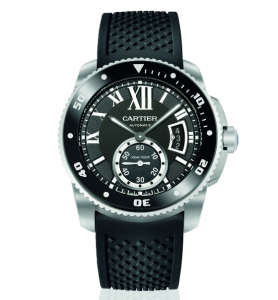
A slightly domed sapphire crystal with no nonreflective coating protects a dial finished in the Calibre de Cartier style. An oversize “XII” dominates, and does almost as much to identify the manufacturer as the brand name directly beneath it. The “California” style carries over, with Roman numerals on top and broad stick markers below. The outer portion of the dial, below the Romans, is snailed. The Roman “X” incorporates Cartier’s “secret signature” anti-counterfeiting feature: the Cartier name in microprint in the numeral’s crosspiece.
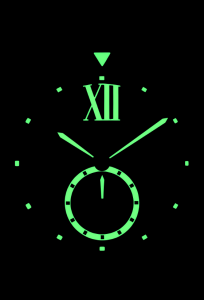
The Dial
When viewing two-digit dates in the curved aperture, it appeared to our eyes that the triangle indicator protruded slightly into the left digit, though the date remains legible. The sword-shaped hands are part of the Calibre de Cartier aesthetic, and they function quite well, though some may regard them as too dainty for a dive watch. In the dark, all three hands glow, as does the small-seconds chapter ring. The small, square dots marking the hours are also treated with Super-LumiNova, though the oversize “XII” is the sole radiant Roman. On the bezel, only the inverted triangle glows, so the other bezel markings are not visible in the dark. In our test, the Super-LumiNova glowed brightly for about one hour. After two hours, the luminous output had declined to the point that it was visible only to eyes adjusted to the dark. Though the luminous output dropped off quickly, luminous elements remained legible for more than 18 hours. If you check your watch in the middle of the night, you will be able to read it.
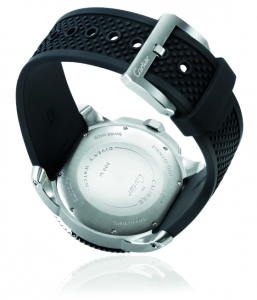
The Strap
The strap is soft rubber, and at 120 mm by 74 mm, it will fit over a wetsuit only if your wrists are small. The strap is 23.5 mm wide at the lugs, limiting precise-fitting aftermarket options. The pin buckle is solid and attractive. It has the same fine brushed finish as the case, with the Cartier name engraved on the frame.
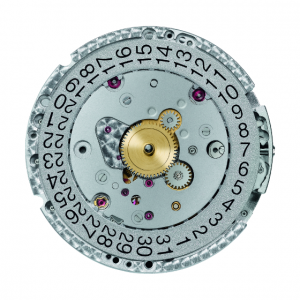
The Movement
The upper, outer edge of the frame displays a fine, polished bevel. Behind the solid caseback is Cartier’s in-house automatic Caliber 1904 MC, which debuted in 2010 in the original Calibre de Cartier. This movement was designed by Cartier’s resident horological mastermind, Carole Forestier-Kasapi, and the architecture emphasizes chronometric stability. The twin, series-coupled barrels do not increase the power reserve, which is 48 hours. Rather, they smooth out the energy flow as the mainsprings wind down. Cartier claims that this design also improves movement durability, as the barrels generate less friction-inducing force. The movement runs in 27 jewels at 4 Hz, or 28,800 vph.
A bidirectional rotor mounted on ceramic bearings winds the mainsprings. The bearings need no lubrication and increase longevity. Cartier uses a V-shaped pawl in place of a standard reverser to increase winding efficiency and improve shock resistance. The rotor and automatic winding bridge are finished with Geneva stripes, while the mainplate wears perlage, or circular graining. The smooth Glucydur balance wheel, flat Nivarox balance spring, and Etachron fine adjustment system regulate the release of energy.
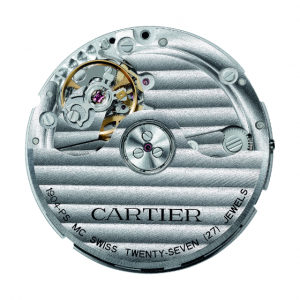
The Cartier Calibre de Cartier Diver’s Test Performance
Given Cartier’s goal for the twin mainspring barrels, we tested the Calibre Diver on the Witschi machine at full wind and again after 24 hours, or halfway through the power reserve. Our test watch appears to have been regulated to run consistently fast. Fully wound, the Calibre Diver averaged +7.1 seconds per day in six positions, with each position in positive territory. After 24 hours, that figure increased to +9.2 seconds. The greatest deviation of rate at full wind was 5.1 seconds (+4.8 seconds crown left and +9.9 seconds dial down). After 24 hours, that figure improved to 4.9 seconds (+7.5 seconds crown up, +12.4 seconds crown down). The Calibre Diver performed much better in real life, running +2 seconds over 24 hours on the wrist. The complete timing results appear in the Specs box. Most of our tests end at this point, but as noted, our test luxury replica watches review meets the ISO-6425 requirements, and because many dive watches do not, we’ll touch on what that means.
The Tests at Cartier
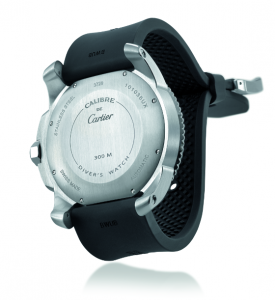
ISO 6425 sets out physical requirements for dive watches, such as water resistance to a given depth, and it defines specific tests to ensure the requirements are met. The physical requirements for mechanical, analog dive watches include a device to pre-select a period of time of up to 60 minutes (usually a rotating bezel), legibility in the dark, an indication that the watch is running (usually satisfied with a luminous seconds hand), salt-water resistance, resistance to external forces, reliability under water, resistance to magnetism (ISO 764) and shocks (ISO 1413), and resistance to thermal shocks (rapid changes in water temperature). Among the tests spelled out in ISO 6425, the most significant is the requirement that every watch must be tested to 125 percent of its rated depth. This is the so-called “overpressure” test. This “test every watch” requirement is much more demanding than that set out in ISO 2281, the standard for watches that are merely “water resistant.” That standard requires testing production samples, not every watch. If your watch meets ISO 6425, you can be sure it was tested to 125 percent of its rated depth before leaving the factory. If it does not meet ISO 6425, you may be wearing an untested watch.
We asked Cartier to outline its Calibre Diver testing procedures. It provided a summary of “some” of the tests it performs: Water resistance at rated depth: 100 percent of watches are individually tested for water resistance at 375 meters, or 125 percent of the rated depth.
